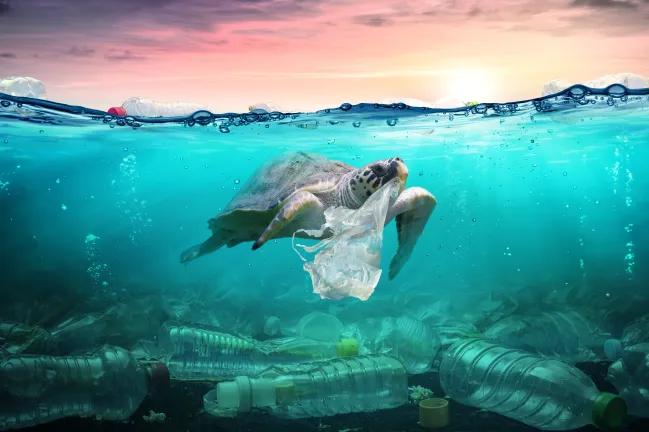Saving the Planet From CO2 and Plastic Pollution
Carbon dioxide emissions and plastic pollution are two of the most pressing environmental issues posing risks to humanity and life on earth. These global issues are two interlinked emergencies driven by human activities.
Currently, there are worldwide efforts to tackle these grand challenges and reduce their impact on planetary health. The solution to this global issue is to apply the concept of the circular economy. The circular economy refers to a systematic model or framework that helps to tackle global challenges involving climate change, biodiversity loss, human health, land degradation, water stress, waste, and pollution. Implementing circular economy practices in a more holistic approach helps to achieve sustainable development goals (SDGs) particularly in SDG 12 (SDG 12: sustainable consumption and production) and SDG 13 (SDG13: Climate Action).
There are various comprehensive strategic plans that have been established by the government to solve these issues such as providing a policy framework with the circular economy roadmap, introducing regulations and legislation as well as executing several awareness campaigns. However, these issues are difficult to be solved if we do not work together to protect our environment and planet.
Tackling the plastic waste problem from laboratory-scale to large-scale
The alternative way to reduce plastic waste is using 3Rs initiative – reduce, reuse, and recycle. According to Solid Waste Management and Public Cleansing Corporation (SWCorp) the recycling rate in Malaysia was at 31.52% in 2021, and this value had increased up to 3.42% as compared to 28.1% in 2019 and the goal of a recycling rate of more than 40% is predicted to be achieved by 2025. Many awareness campaigns have been established to encourage the public to practice the 3Rs. Although the recycling methods can help minimise plastic waste, not all plastic types can be recycled. The plastics end up in landfills and waterways thus causing severe environmental problems. Moreover, based on the circular economy principle, plastic waste is possibly be reused or reproduced for new products. Polyethylene terephthalate (PET) is a plastic bottle which is commonly used in everyday items and most of PET plastics are being discarded in landfill or the waterways, thus creating a serious environmental problem.
Nowadays, scientists and researchers have developed innovative solutions to solve plastic pollution by turning plastic waste into advanced materials that can be used to capture CO2 and thus reduce its emissions. For example, at Research Centre for Carbon Dioxide Capture and Utilisation (CCDCU) we have demonstrated that waste PET or mixed plastic can be converted first into char or carbon-based material through the heating process in the absence of oxygen using carbonisation (pyrolysis) or hydrothermal method. The produced product (char or carbon-based material) has high carbon content (more than 65 weight %) and is suitable to be used as capturing material to reduce CO2 concentration.
The carbon-based material derived from waste PET can be modified using a different activating agent like potassium hydroxide or potassium acetate to enhance the surface properties and its carbon dioxide capture capacity. After modification, the modified carbon material has excellent properties such as large surface area, high pore volume, high oxygen functional groups, and high thermal stability, and thus becomes a good capturing material to be used to reduce CO2 concentration.
This material can be used in biogas upgrading and power plants to capture carbon dioxide from flue gases. Converting plastic waste into carbon-based material is an alternative option to reduce the solid waste problem. Plastic waste is suitable to be converted into valuable products such as carbon-based material rather than being thrown away. The environmental impact of plastic waste can be evaluated using a life cycle analysis framework. This innovation can help to achieve SDGs specifically Goal 12 and Goal 13. Finally, reusing the waste and producing new products with low-cost processes could help save the environment, and planet and bring great profit to the industry if the product has the potential to be used in large-scale production. Therefore, replicating the success of lab-scale research to large-scale setups (industrial scale) needs investment incentives from various parties such as government support and industries.
Ts. Dr Farihahusnah Hussin
School of Engineering and Technology
Email: @email
This article was first published in Business Today, 30 July 2022.




